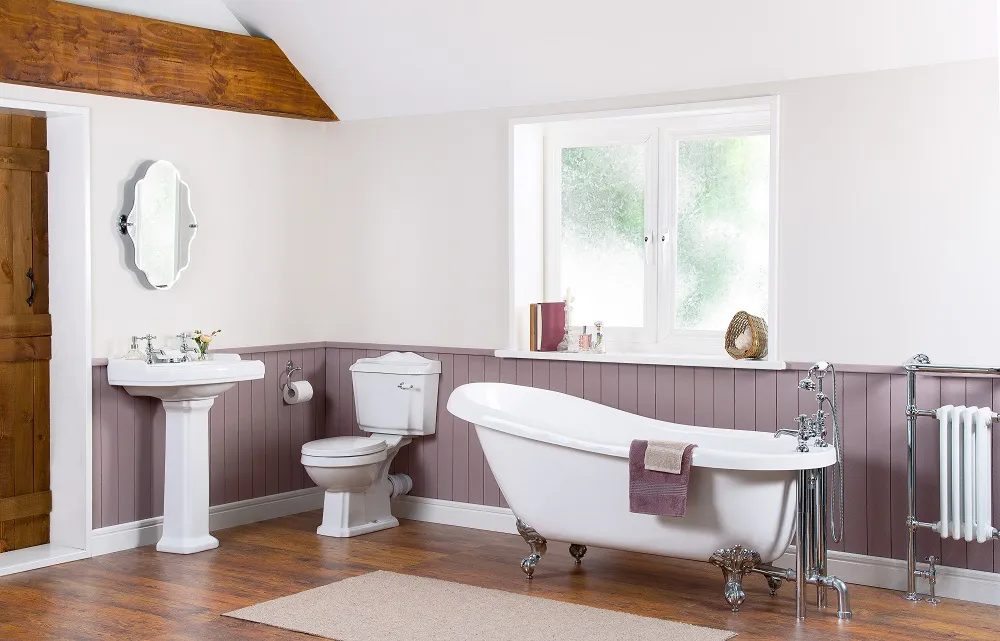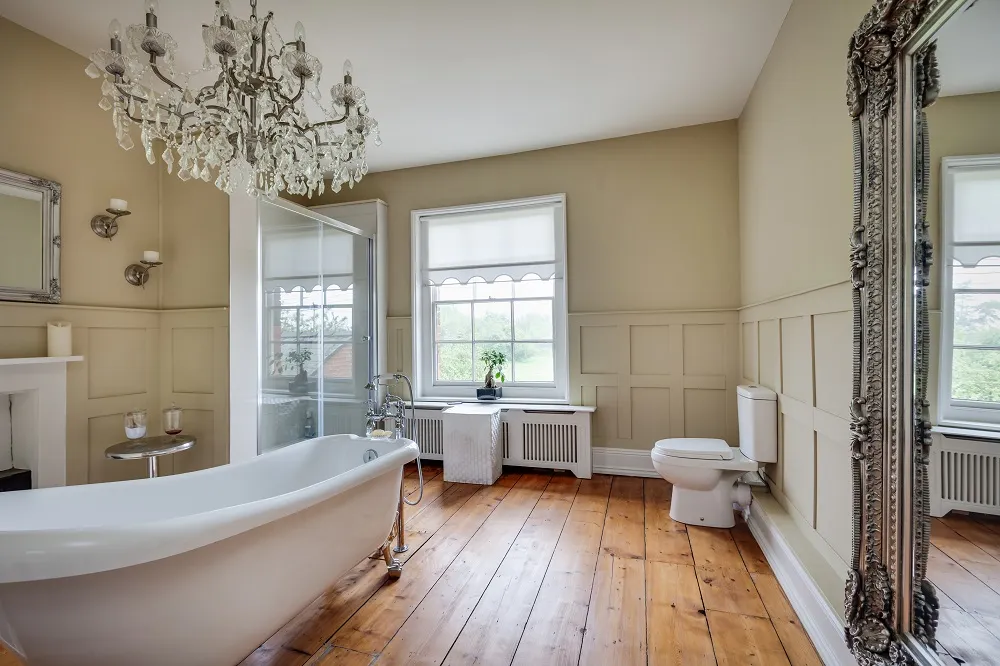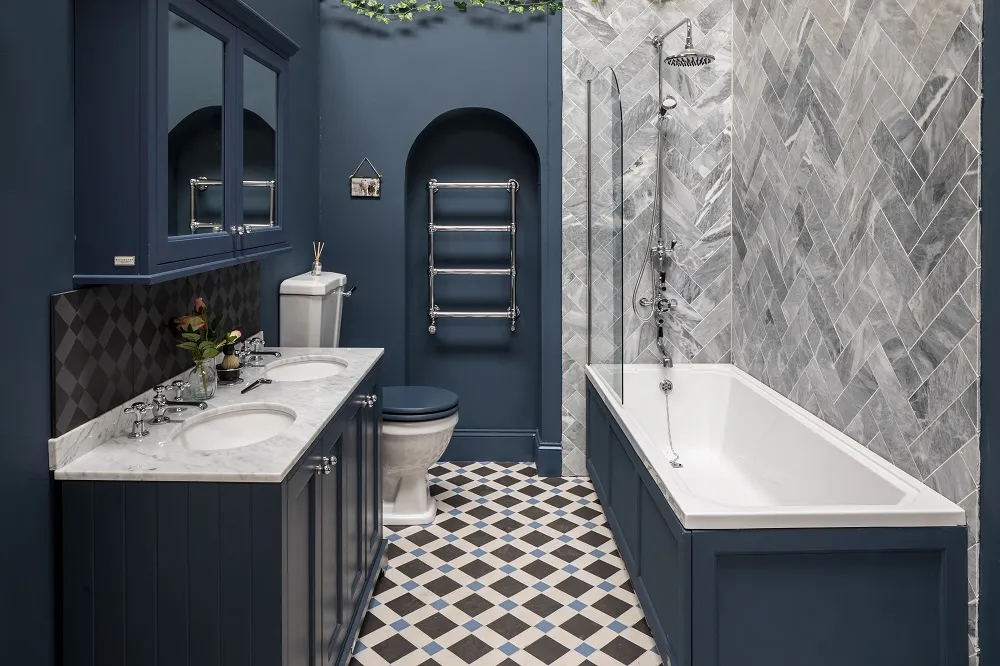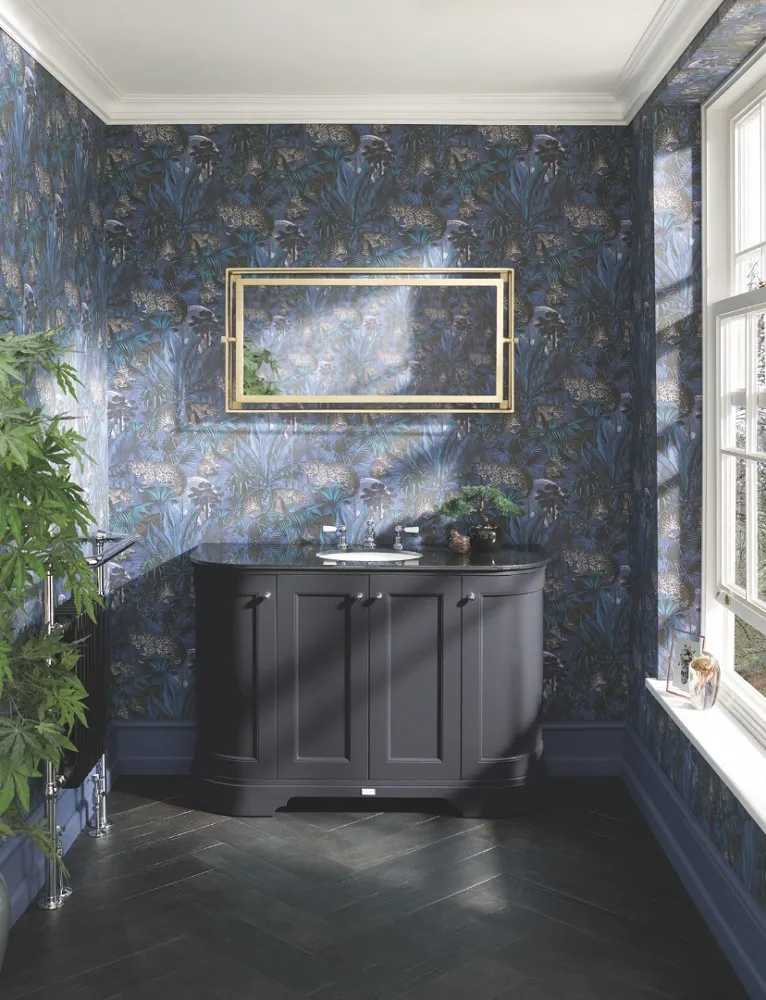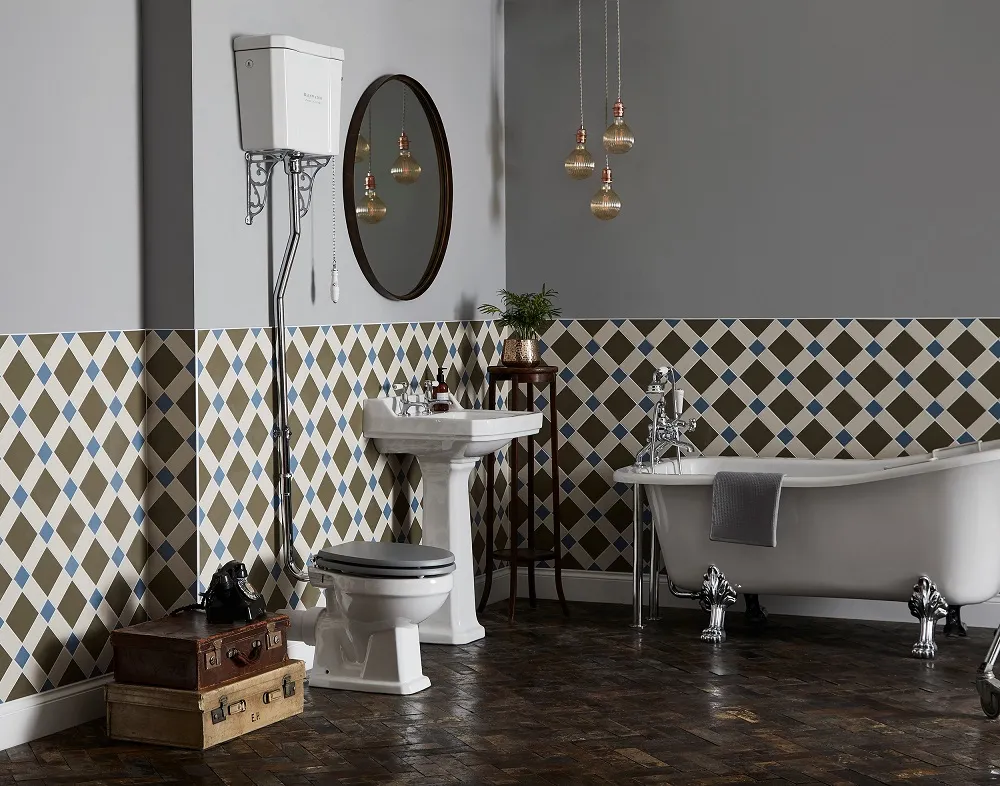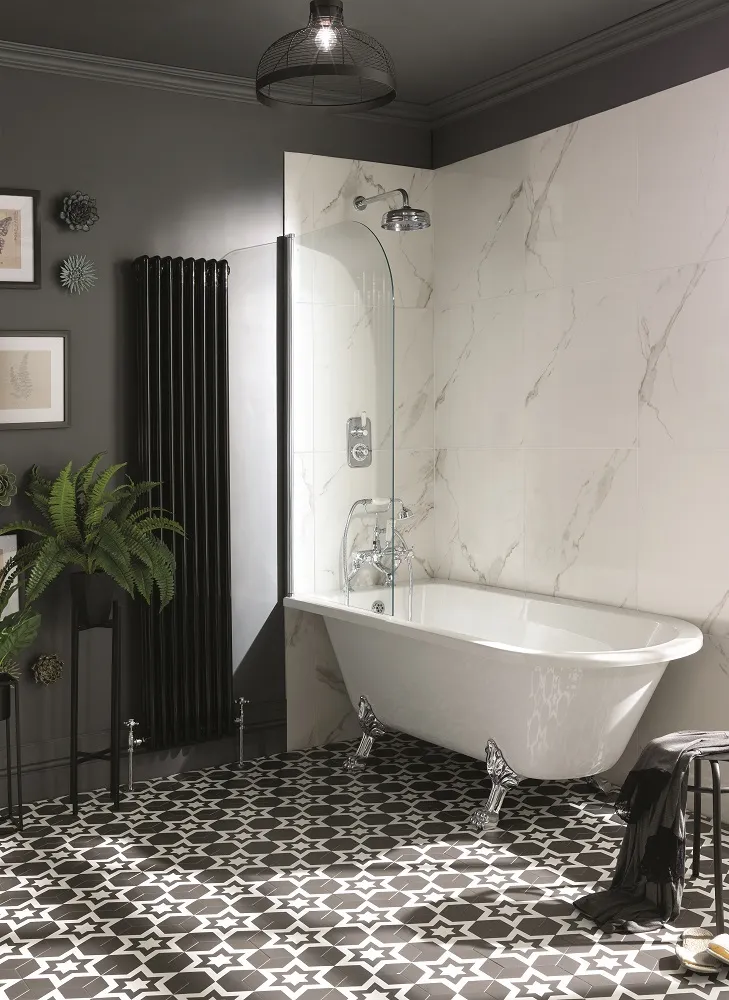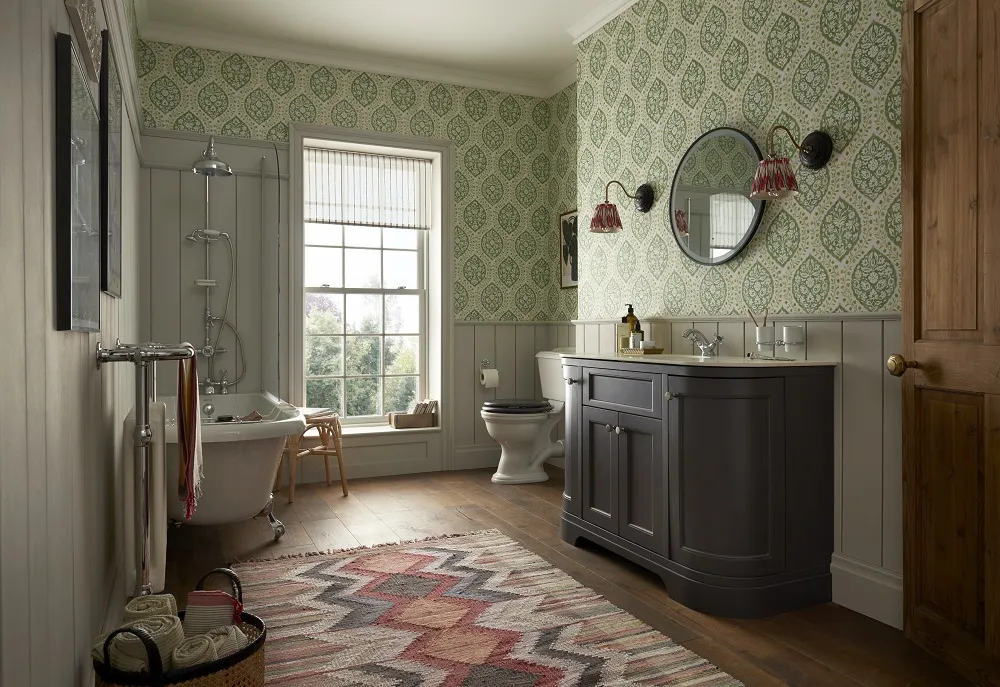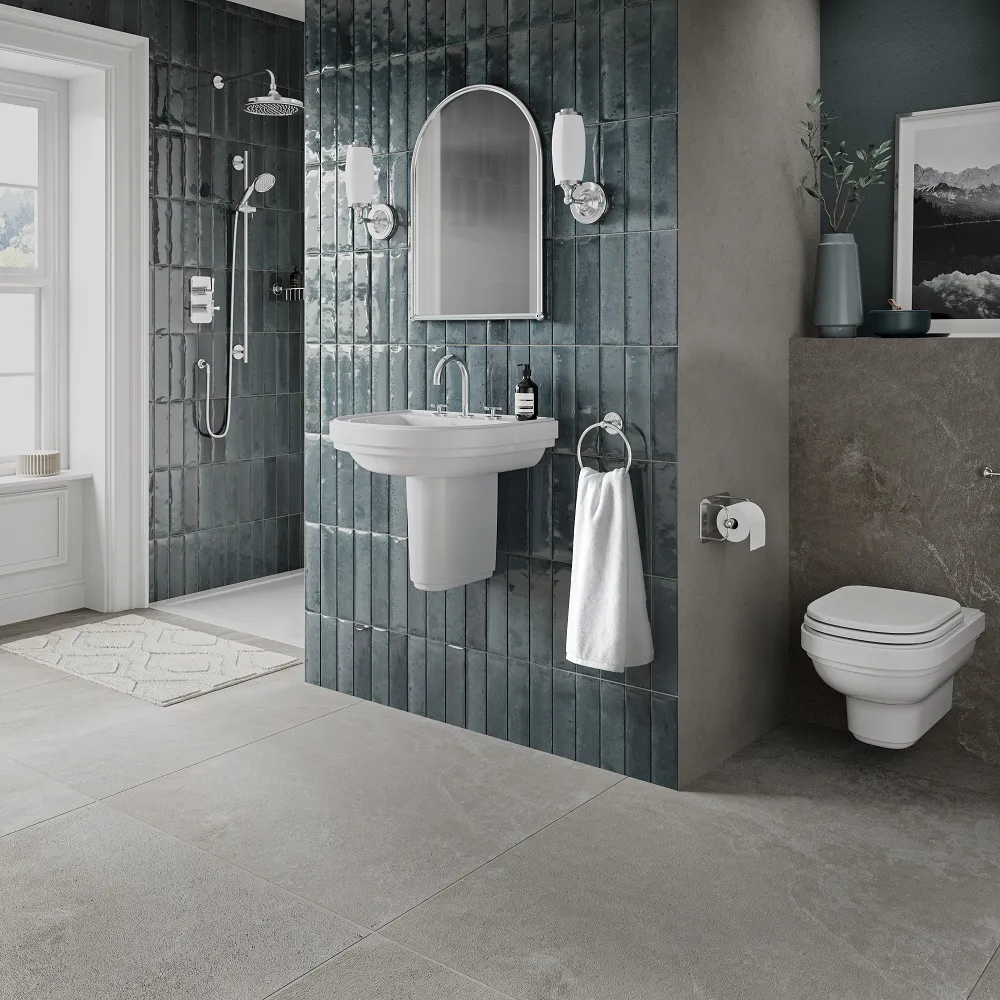Tired of trying to keep up with all the latest bathroom trends? While each new year introduces us to new colour palettes, innovative fixtures and brassware boasting all sorts of contemporary finishes, it is reassuring to know that the style and features of the traditional bathroom are as popular today as they were first introduced in the late nineteenth and early twentieth century. However, transporting your bathroom back through time to achieve that traditional look is not as simple as filling it with old fashioned furnishings.
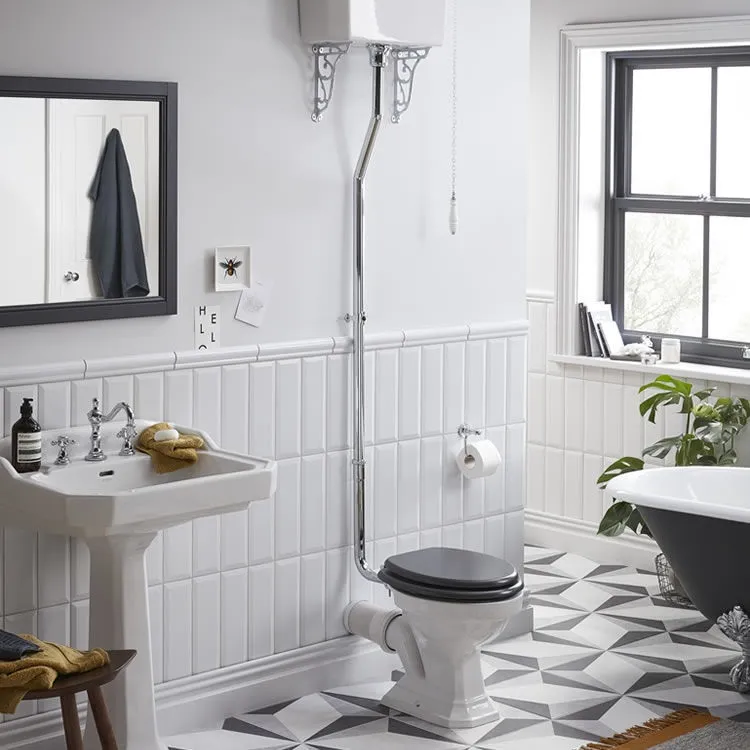
In this article, we will outline everything you need to consider while incorporating a traditional style bathroom into your home, from the subtle differences between the most popular period bathrooms, to keeping your fixtures and decorations coherent with your theme, as well as touching on some bathroom traditions from around the world.
What is a Traditional Bathroom And What Time Periods Does it Cover?
While the earliest example of the English bathroom came in the form of the twelfth century Bath Houses, which resembled the Italian bagnios and were located on the South Bank of the River Thames, when we refer to ‘traditional’ bathroom design, we are talking about the sort of washroom that you would find in the upper class homes of the Georgian era and increasingly in middle class homes during the Victorian and Edwardian periods.
In response to recurring cholera epidemics in the early 1850s and propelled by widespread repulsion at The Great Stink of 1958, the British government accepted the proposal from Joseph Bazalgette to overhaul the sewage systems underneath all major cities. As more of the country were given access to indoor plumbing, more people were replacing their tin baths and porcelain receptacles with the freestanding roll top baths, ceramic sinks and traditional toilets and traditional close coupled toilets that we have come to associate with traditional bathroom design.
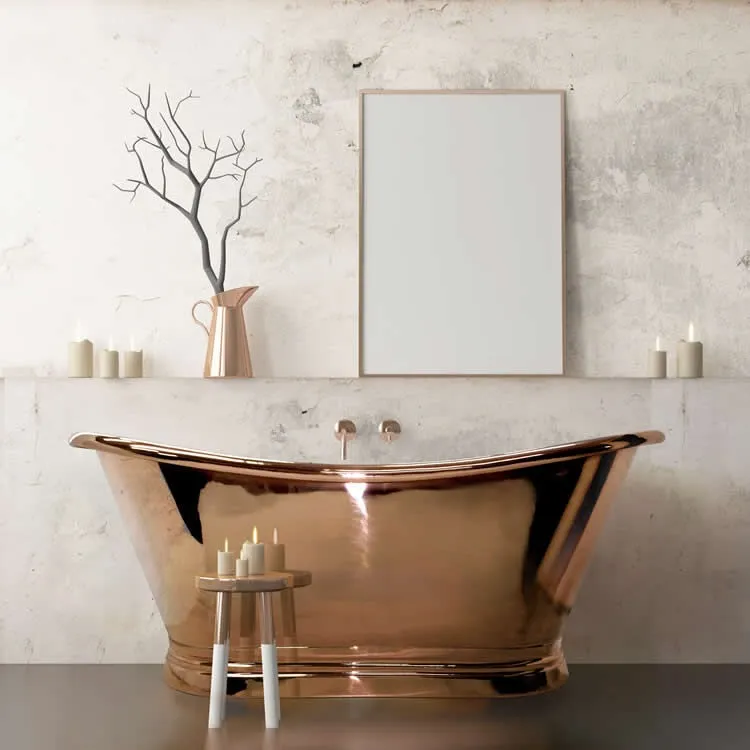
Does a Traditional Bathroom Refer to the Style or Layout of a Bathroom Space?
Today, it is safe to assume that most domestic bathrooms will have at least a toilet, a basin and a bath or shower depending on its size, but even in the Edwardian period it was rare to find all of these fittings contained within one space. Although advancements in indoor plumbing saw baths moving from in front of the fireplace to their own designated room, it was more common for basins to be placed in the corner of the bedroom, while many people remained repulsed by the idea of an indoor toilet until the 1950s.
It is for this reason that our modern conception of a traditional bathroom reflects the style of the bathrooms from these periods rather than their layouts. There are some aspects of Georgian, Victorian and Edwardian design that are relevant if you wish to achieve an authentic bathroom, such as the arrangement of certain furnishings within the space. We will discuss these in the following section, but unless you like the idea of an outhouse at the bottom of you back garden, your traditional bathroom should aspire to a classic aesthetic in hand with the convenience of contemporary plumbing.
Are There Different Styles of Traditional?
Until now we have focused on the innovations during the Victorian period as way of contextualising the traditional style, but it would be a mistake to think of Georgian, Victorian and Edwardian bathrooms as one and the same. Even though these eras are adjacent in history and there is some overlap between them, it is important to be aware of the features that distinguish them from one another to avoid any incoherence in your own design.
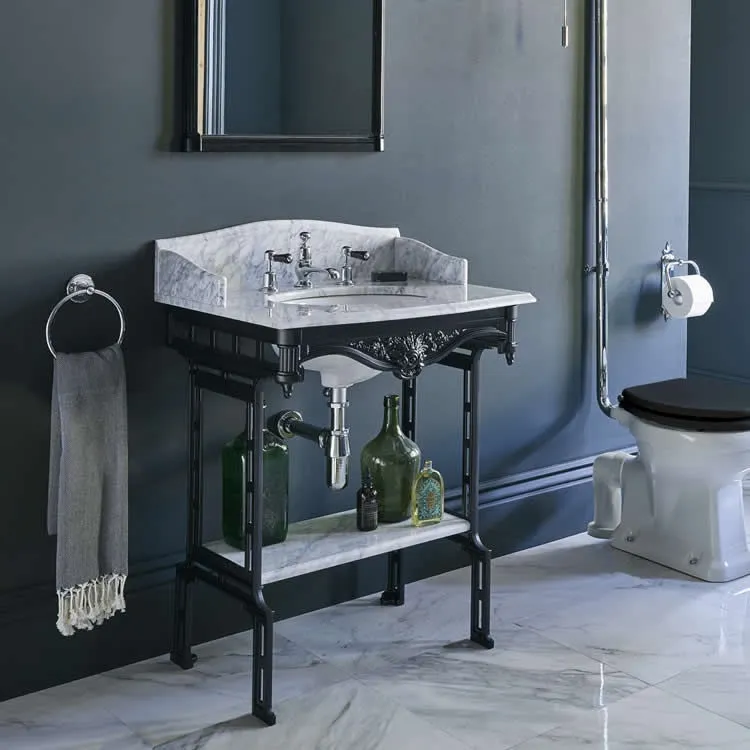
Bathrooms in the Georgian era were defined by elegance and simplicity. As the only feature we would associate with bathrooms today to appear in this period was the eponymous bath, which would have been deep and oval shaped, our modern conception of the Georgian bathroom is mainly derived from the furnishings and architecture of the room itself. Wooden furniture was common as it allowed bathers to be seated while undressing or drying, as well as somewhere to display a tasteful selection of ornaments. While floral tones might have appeared in moderation, subdued tones such as burgundy and sage were preferred, which were often paired with black and white flooring. Much like any room in a wealthy Georgian home, symmetry was very important.
Conversely, the Victorian bathroom is characterised by opulence and indulgence. Bold colours covered the walls and ornate patterns, often with an element of exotic influence, would have embellished the bathroom tiles and even washstands of more affluent homes. Ornaments were laced abundantly around the room and the advent of sophisticated shower systems was celebrated by leaving their pipework on display, sometimes elaborately weaving it around the end of baths or shower enclosures in a ribcage design that is rarely replicated today.
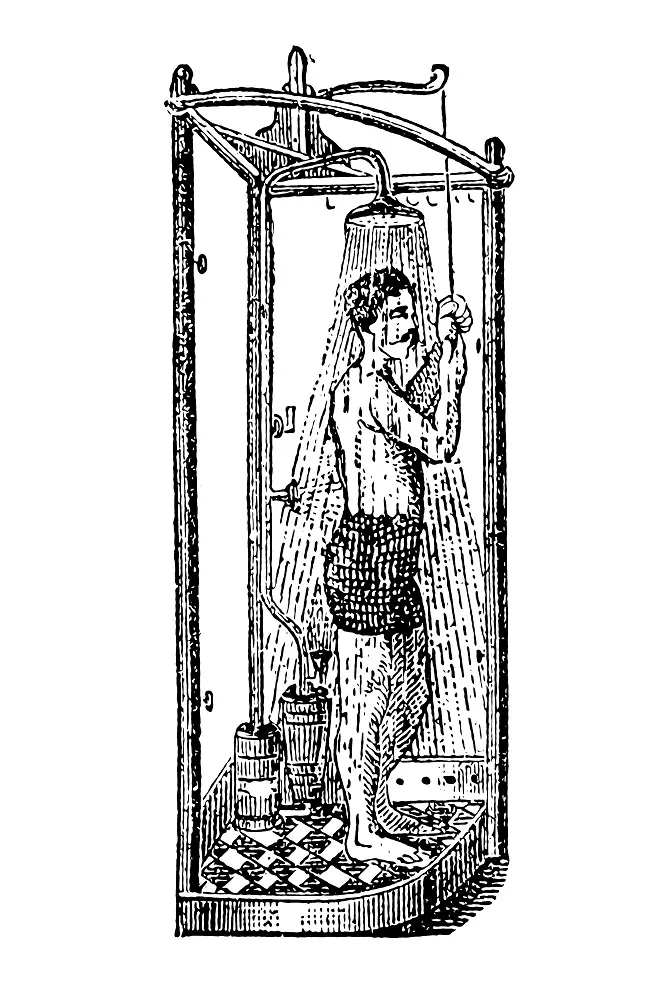
Intriguingly, bathrooms in the Edwardian period seem to share more similarities with those you would find in the Georgian era than with their Victorian neighbours. The popularity of wooden furniture returns, used again to display a sparser selection of ornaments and to conceal other bathroom items to achieve an overall cleaner aesthetic. The start of a new century brought with it a sense of optimism and rejuvenation, which is reflect in the crisp tones and pastel shades that accented many Edwardian homes, primrose yellow and duck egg bringing more brightness to the bathroom than in previous centuries.
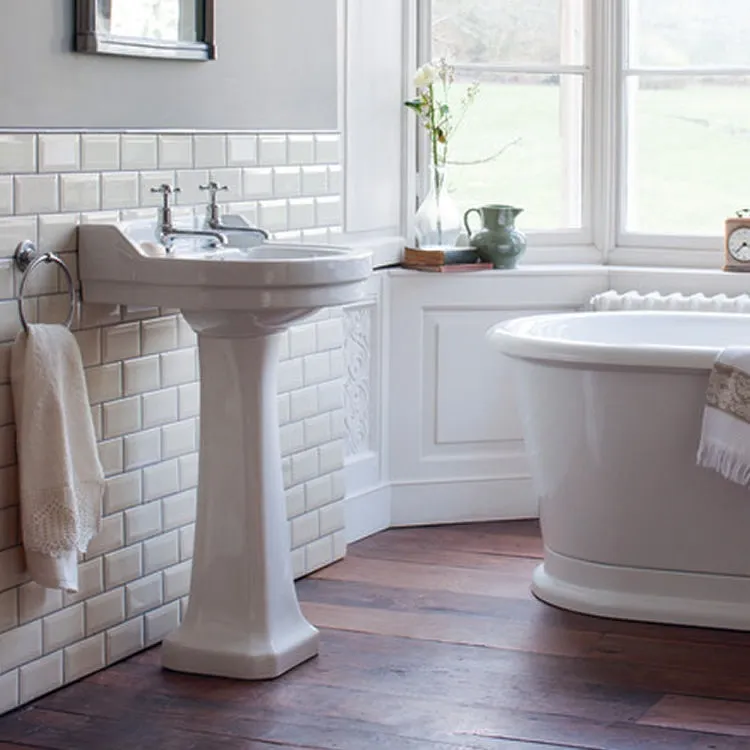
While the amount of ornamentation differs between these periods, the effective use of decoration in your bathroom is key to achieve that traditional look. Introducing a hero piece into your bathroom, whether it is a statement fixture, an ornate accessory or an attractive centrepiece with no practical utility, is a reliable way to remain true to your chosen era while ensuring that your aesthetic is coherent across the space.
Are Traditional Bathrooms Timeless?
From the eighteenth to the early twentieth century, traditional bathroom design has established our expectations for how our bathrooms should look and feel. While there are elements of traditional design that date the style, such as some of the colour palettes and the importance of ornamentation, there are an abundance of features that make the style truly timeless.
The white ceramic basins that came into prominence during the Victorian period are now a staple of bathroom design and although they are commonly paired with modern mixer taps plated in chrome, opting for copper or brass faucets is an excellent way to respect tradition while embellishing your basin with timeless charm. Freestanding baths are also as popular today as they were essential to the traditional bathroom, but for a bathtub that is at once timeless and true to your theme, an oval shaped freestanding bath similarly paired with copper or brass faucets should be intrinsic to your design.
Are There Any Products or Fixtures That Are Suited to A Traditional Space?
Now that we have given you a sense of the traditional style, it is time to get specific about the type of fixtures you should consider when assembling your traditional bathroom. The following section will breakdown each of the essential items, while providing you with a few variations such that you can curate an authentic bathroom that is still unique to you.
Traditional Style Basins
While most modern basins have clean outlines and sharp angles, the traditional basin should be more elaborate in its composition to achieve a softer silhouette. Its square shaped bowl might be embellished with stepping, giving additional ridges around its edge, while the back of the basin might feature a raised backsplash. As stated previously, symmetry is an important aspect in traditional design and while you may choose a single basin with two tap holes, this effect can also be accomplished with a twin basin.
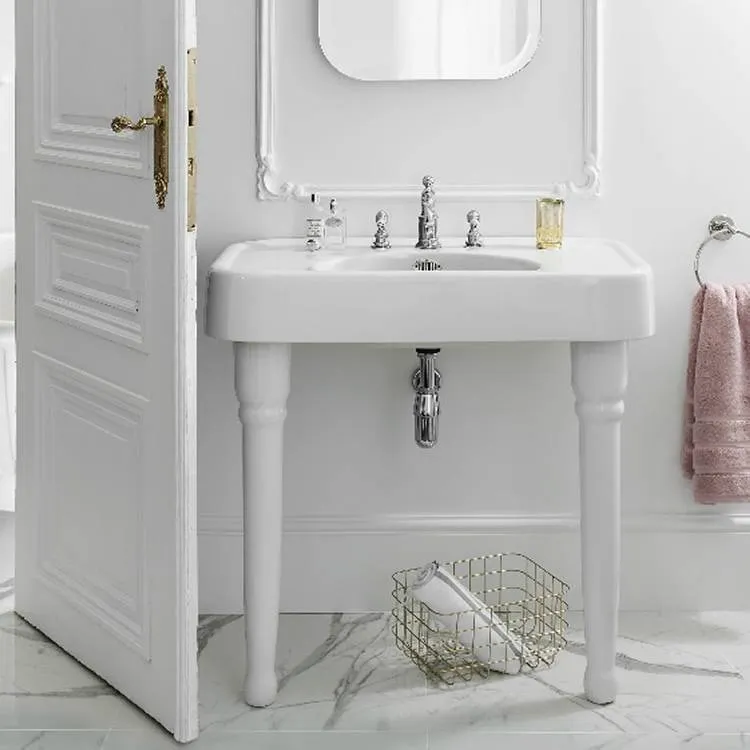
When it comes to the washstand, an ornate wooden washstand is your most historically accurate option, but there are modern alternatives which also suit the traditional style. Metallic washstands with an integrated rack for your towels would pair perfectly with exposed pipework elsewhere in your bathroom and although the pedestal basin was invented at the end of the Edwardian period, its shaping and detailing is perfectly in keeping with the ornamental nature of the traditional theme.
Traditional Style Toilet
As mentioned earlier, it is unlikely that an indoor toilet would have featured in many traditional bathrooms, but the style of the toilets from these periods can nevertheless be replicated. While you may associate the high-level toilet and cistern with public restrooms, this style used to be more common in domestic settings and its extended design makes it ideal for customisation. Whether you are making the most of its exposed pipework, adorning the cistern with an inviting pull chain or topping the toilet pan with a wooden toilet seat, the high-level toilet can almost serve as a canvas for you to express your chosen style.
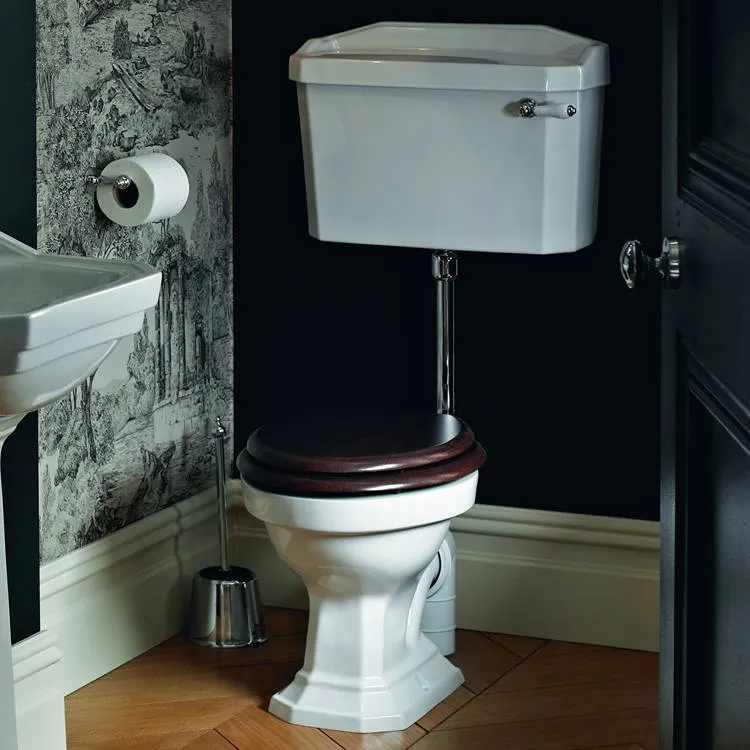
Alternatively, the close-coupled toilet is similarly in keeping with the traditional style and may be better suited to a smaller space. Although its cistern is at a lower level, you can elevate its appearance with an engraving, such as the name of the manufacture, in the embossed style which still appears today on all Thomas Crapper toilets.
Traditional Style Bathtubs
As stated previously in this article, an oval shaped freestanding bath is an essential fixture for your traditional bathroom, however there are a few more features to keep in mind in order to maximise the authenticity of your tub. The curved lip of the roll top bath is an iconic part of the British bathroom, as are the cast iron claw feet that raises the freestanding bath off the floor.
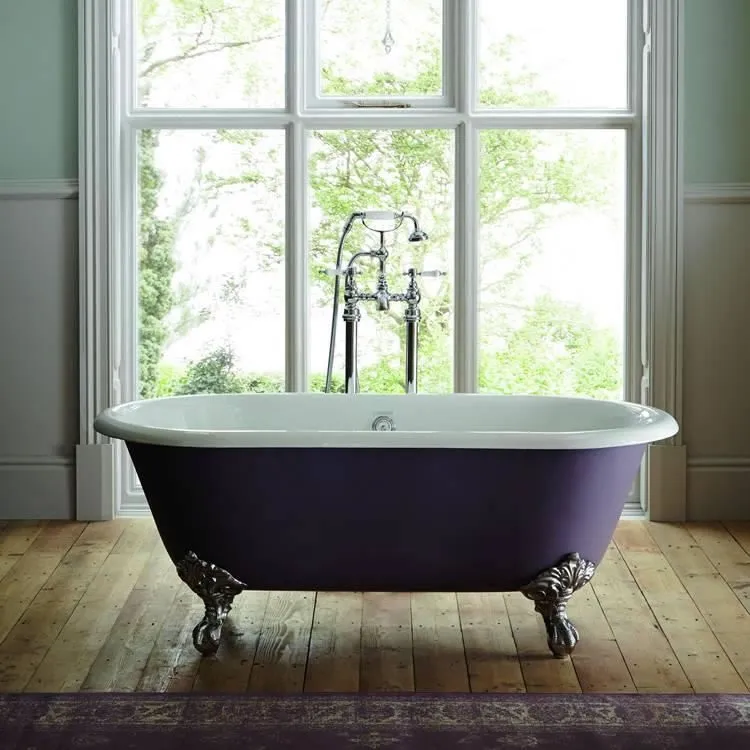
With regards to your accompanying brassware, while most roll top baths featured tap holes at one end of the tub, if you wanted to upgrade to a double ended bath then floorstanding taps would also complement the traditional style, provided they were appropriately plated in copper or brass.
Traditional Style Showers
The shower bath may seem like a modern invention, but for the members of Victorian society who had the money and inclination there were large plunger or canopy baths with shower attachments are one end. These functioned much like modern shower baths, with the exception that more of the pipework was featured much more prominently, in some cases even wrapping around one end of the bath in the aforementioned ribcage design.
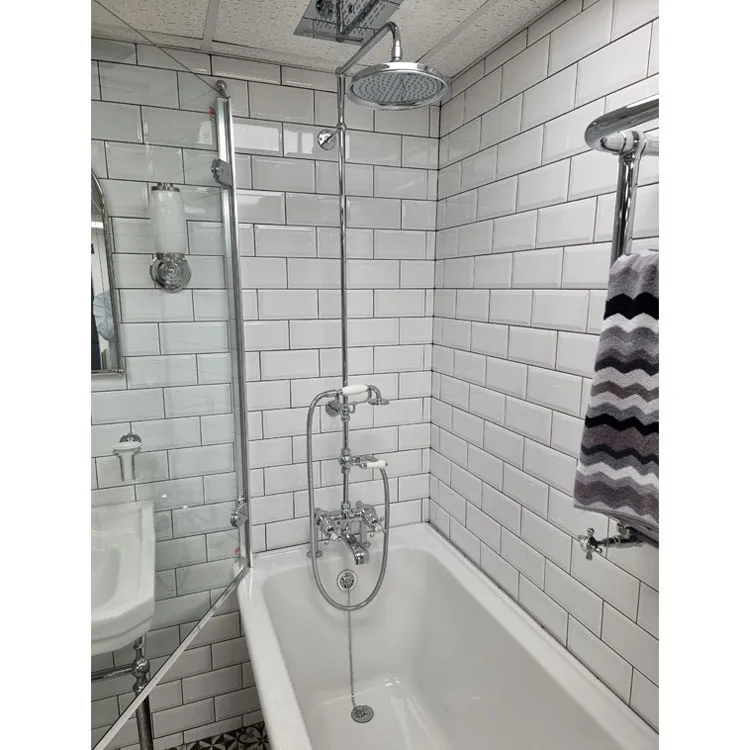
Traditional shower enclosures were tiled from the floor to the ceiling, whereas the showers systems that accompanied plunger and canopy baths usually featured a circular rail underneath their circular shower heads, around which a shower curtain could be drawn to prevent water soaking the bathroom floor. Whether suspended above the bath or in an enclosure of its own, all shower systems from this period were wall mounted and were operated via cross shaped dials.
Should You Use Tiles in A Traditional Bathroom?
As bathrooms became more accessible throughout the Victorian era, attitudes towards hygiene similarly started to shift. While at the start of the century, bare feet touching exposed wood was not only commonplace but widely accepted, suddenly the Victorian people began to equate their wooden floors with uncleanliness and tiled bathroom floors came into prominence.
Today the choice is yours. For a warmer aesthetic in keeping with the Georgian period, wooden flooring is perfectly acceptable, although this would have to be specially engineered with multiple sheets of wood and veneer to ensure it could withstand the moisture and changes in humidity of your bathroom.
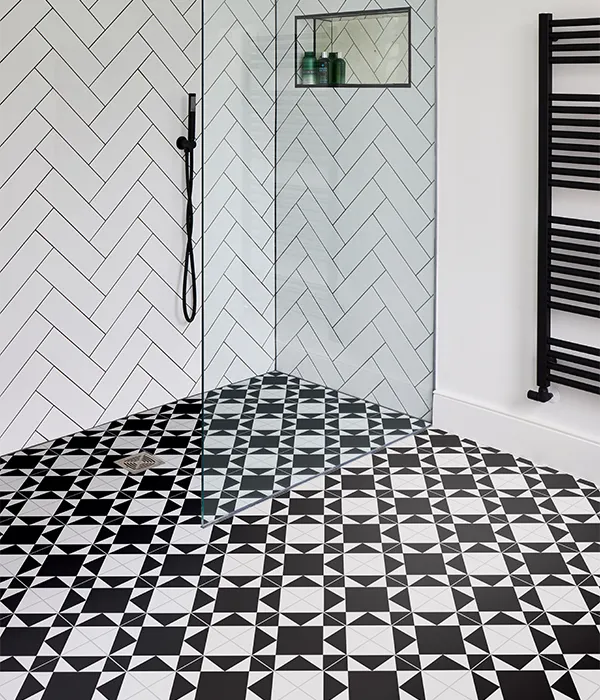
Floor tiles have the benefit of any easier installation while providing more opportunities for your own inventiveness. Geometric designs were particularly popular in the Victorian and Edwardian eras, with tessellating patterns to give a sense of depth to the space. While wall tiles were allowed to be more decorative, often featuring floral or exotic designs, floor tiles were expected to adhere to a more earthy palette so as not to detract from the ornamental furnishings.
Are There Any Advantages or Disadvantages to A Traditional Style Bathroom?
Although we joked at the start of the article, there is some truth to the enduring popularity of the traditional style bathroom. Contemporary interest in the designs from bygone eras not only makes the traditional style a safe bet in a world of ever changing trends, but can actually prove to be a good investment for those who cannot afford to update their bathroom in line with the latest fashion.
There are no inherent disadvantages to adopting the traditional style in your bathroom, but you may want to consider how this aesthetic may work in the context of the rest of your home. If you live in an older property that already has some classic architectural features, then the traditional style might be the perfect fit. However, if you live in a new build and the rest of the house is more modern in its appearance, then attempting to create an authentically traditional bathroom could create a sense of dissonance in your home. Imagine how strange it would be to see a heritage property with a high-tech bathroom decked out in chrome: the same would be true of a modern property with a traditional bathroom.
Can You Combine Traditional and Modern?
While a strictly traditional bathroom might not be suited to every property, there is nothing to stop you from introducing elements of the traditional style into a modern space.
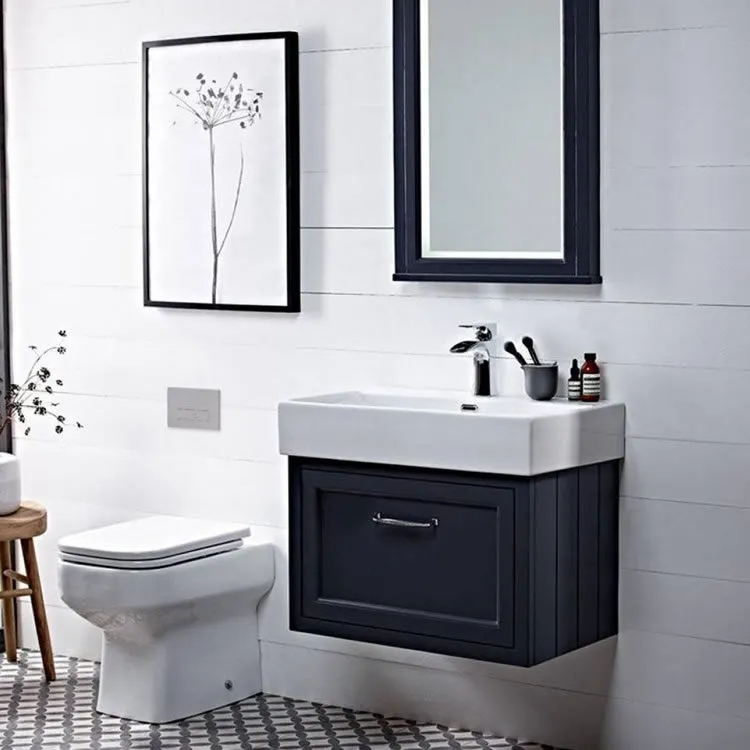
Perhaps you could pair a wall hung basin with a vintage cabinet smaller enough to sit underneath it? Maybe you could change your brassware so that it matches the colour of the claw-feet on your freestanding bath? If your heart is set on some floral tiles, rather than completely covering your walls perhaps you could isolate them to one area, such as above your sink to form a decorative backsplash? As long as all of the elements feel coherent in the space, traditional and modern features can easily live alongside each other.
How Do Traditional Styles Vary Around the World?
Our discussion of the traditional style has thus far been limited to the features and aesthetics that originated from the British bathroom traditions, as this most accurately reflects the style of products you will encounter when browsing traditional bathroom products online. However, we appreciate that British bathroom culture is no more universal than any other aspect of British society and you only have to cross the Channel to start noticing the differences. The following section will explore some of the other bathroom traditions from around the world while suggesting some ways that you might introduce some of these elements into your own home.
Traditional French bathrooms
The defining feature of the traditional French bathroom is the roll top bateau, or boat bath as they are more commonly known today. Created in the mid-nineteenth century by the designer Joseph Delafon, the bateau has some similarities with the British roll top, but is double rather than single ended and is flush to the bathroom floor rather than having claw-feet.
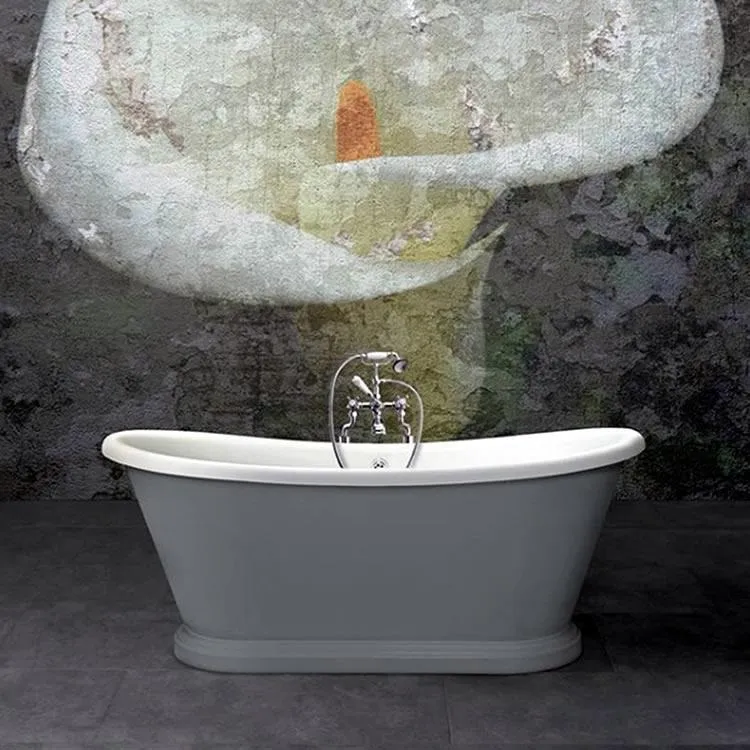
Besides the bateau, traditional French bathroom contains a blend of country influences and more lavish touches. Floral designs appeared on tiles and were even engraved in basins, wooden stools and wicker baskets gave somewhere sit and store bathroom items, while accessories plated in gold accented these spaces with an understated splendour.
Traditional Italian bathrooms
The modern Italian bathroom is widely known for straight lines and striking minimalism, but it may surprise you to hear that the traditional Italian style had more in common with the opulence of the Victorian era. This can be seen in their exquisite furniture, which adopted the intricate ornamentation of Baroque and light shades of Rococo to invigorate their spaces with elegance and refinement while softening the furnishings, such that the traditional Italian bathroom always remained warm and inviting.
Traditional Moroccan bathrooms
While the components that constitute the traditional Moroccan bathroom do not differ from those that you would find in most European bathrooms, their materials and the mood they create makes the traditional Moroccan style stand apart. Curvaceous freestanding baths take centre stage in the Moroccan bathroom, made from a variety of materials including cast iron, copper or stone, while their finishes range from exposed iron and copper to dramatic matt black.
Above all else, the appropriate us of tiles is essential to achieving the Moroccan style. From the neutral shades of beige and cream for the floors, the cool shades of blue and green for the area around the toilet, to decorative wall tiles covered in geometric designs inspired by Islamic art and even Arabic script, the design of a Moroccan bathroom should be as much about creating an atmosphere of calm as celebrating the Moroccan culture.
Traditional Japanese bathrooms
Based on a practice developed by monks in the sixth century and adopted by wider society in the sixteenth century, the tradition of Japanese bathroom design is ingrained in their belief that bathing not only cleans the outside of the body, but rids the body of illnesses. As a result, it is unlikely that you would want to precisely emulate the Japanese style, but you may wish to take some inspiration from their ethos.
Whereas most British bathrooms have included a toilet since the 1950s, in Japanese culture it is still custom to locate the toilet to an entirely separate room. The bathroom itself is actually divided into two areas, one for undressing and the other for bathing. While the first area is closer to a cloakroom, often including a basin and somewhere to store clothes, the second area is akin to a wet room, with tiles or PVC from floor to ceiling to ensure the entire space is waterproof. This second area is similarly divided into two, with one section including a shower and a small stool on which you would sit to wash yourself, while the other section features the iconic yubune, a deep bathtub with straight walls, in which you would sit with your knees to your chest and begin to relax.
What Traditional Bathroom Brands Are There?
With the traditional style remaining as popular today as it has ever been, there are almost as many designers working on contemporary fittings as there are refining and reimagining designs from the periods discussed throughout this article. This final section will provide you with a selection of traditional bathroom brands to get you started, all of which we stock on the Sanctuary Bathrooms website. Peruse their products then begin curating your traditional style bathroom with us today!
Founded by the highly regarded team behind BC Designs, Bayswater revives the distinguishing characteristics of Edwardian and Victorian bathroom design with their exquisitely designed sanitaryware and accompanying brassware.
With a complete collection of traditional products, updated to have modern functionality, the Burlington range allows their customers to create spaces that reflect great design throughout history, from the Edwardian and Victorian eras to the unique Belle Époque style.
Introduced to the market in 1985 and based out of Staffordshire in the UK, the philosophy at the heart of Heritage bathrooms is to give people good design that will endure for every bathroom, in every home.
Pictures of Traditional Bathrooms
To help provide some inspiration, curated below is a selection of images and photos of traditional-style bathrooms to provide inspiration and creativity.
